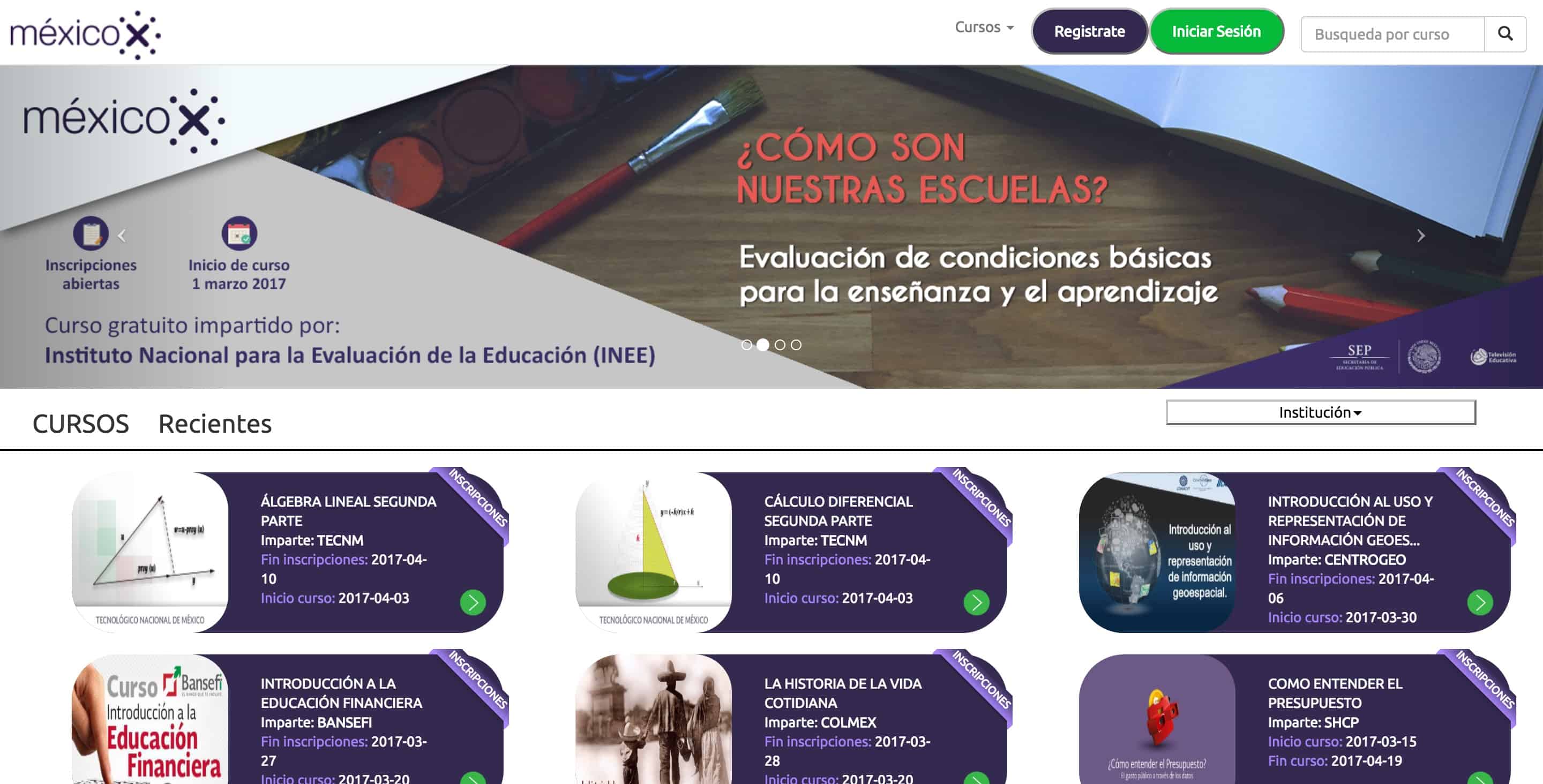MéxicoX: Growth, Monetization, Stability: How Will These Challenges be Faced?
What can we expect to see from MéxicoX in 2017?
In part 1 of the series we learned about MéxicoX, a MOOC platform backed by the Mexican government. In this second and final part we investigate the challenges faced by the small team at MéxicoX, along with their plans for the future.
The answers below were given to Class Central by Digital Learning System, part of the General Directorate of Educational Television, in an email interview, who manages MéxicoX Platform.
How does MéxicoX monetize? Do you have any further plans on monetization?
For the moment, we do not monetize. Mexico has a public education and as the platform is part of the Ministry of Education, we are not allowed to monetize. But we are exploring some mechanisms to do so with a third party. We are aware that sooner or later we will have to monetize to have a return on investment, but we have to be creative and develop new ways of collaborating with our partners.
How does MéxicoX envision the role of MOOCs in traditional education in the future?
Well, we think that MOOCs are one of a lot of online options for learning, and we think that the MOOC has come here to stay. This kind of online education has great results in developing countries, and half of the users receive certification. Some of our universities are using the MéxicoX platform to support their curricular plans; some others are using it for short prep courses to check whether or not a student has the required background knowledge and potential skills.
MOOCs are a valuable complement to formal education and they are a great area of opportunity, rather than a threat. MOOCs offer a wide range of potential knowledge, and for free.
What are some of the biggest challenges faced by MéxicoX?
We have faced several challenges. Among them are:
- The open source platform wasn’t easy to implement. We developed and implemented technical solutions by hiring highly-experienced staff, due to a lack of documentation for the open code.
- Low budget.
- Explosive growth of userbase, which wasn’t expected.
- MéxicoX services are free for the students and the institutions who develop and store courses (strategic allies). The institutions have developed and paid for their entire courses. We negotiate with the institutions and show them that it is worth developing and storing a course in MéxicoX. So far, most of the courses have been specially designed for the platform, so it is a challenge to be able to scale the program and make it sustainable. It can be very expensive to design and create a MOOC, and we need to make sure that the program is stable enough to last for the foreseeable future.
- Working in collaboration between institutions. This has been a significant achievement, given the difference in universities’ approaches, topics, and levels of understanding about MOOCs. The success of the program depended on aligning the views of those who are participating, and doing so without losing the creativity and insights of each.
- Competing with other MOOCs platforms.
- We experienced some resistance because this is an innovative program.
What are the plans specifically for MéxicoX in 2017?
Our plans are as follows:
- To offer more quality content courses from higher education institutions.
- To expand the platform across the country, and across Central and South America.
- To cover more national institutions.
- To cover international institutions.
- To develop a MOOC Lab.
- To update the platform once a year.
- To develop more workshops for MéxicoX strategic allies.
- To consolidate the platform.
- To continue developing policy regarding the MéxicoX platform.
- To check the relevance and pertinence of educational curricula to define quality in education.
- To have more than 1,750,000 enrolled users at the end of 2017.
- To take into consideration specific requirements in accordance to Mexico´s necessities.
- To use focus groups to corroborate the results that the platform already measures: reports, instruments of evaluation, questionnaires, evidence of learning, etc.
- To improve course completion rate.
- To monetize (i.e. to have a return on investment).
- To ensure more collaboration between private and public partnership, academics, civil society, and the government. Also to provide more certificate programs besides MOOCs and SPOCs.
Related
- XuetangX: A Look at China’s First and Biggest MOOC Platform
- EduOpen: a new MOOC Provider Funded by the Italian Government
- The MOOC Platform with a Twist: The Emergence of UK-Based FutureLearn
Tags







